Welcome to RennTech.org Community, Guest
There are many great features available to you once you register at RennTech.org
You are free to view posts here, but you must log in to reply to existing posts, or to start your own new topic. Like most online communities, there are costs involved to maintain a site like this - so we encourage our members to donate. All donations go to the costs operating and maintaining this site. We prefer that guests take part in our community and we offer a lot in return to those willing to join our corner of the Porsche world. This site is 99 percent member supported (less than 1 percent comes from advertising) - so please consider an annual donation to keep this site running.
Here are some of the features available - once you register at RennTech.org
- View Classified Ads
- DIY Tutorials
- Porsche TSB Listings (limited)
- VIN Decoder
- Special Offers
-
OBD II P-Codes - Paint Codes
- Registry
- Videos System
- View Reviews
- and get rid of this welcome message
It takes just a few minutes to register, and it's FREE
Contributing Members also get these additional benefits:
(you become a Contributing Member by donating money to the operation of this site)
- No ads - advertisements are removed
- Access the Contributors Only Forum
- Contributing Members Only Downloads
- Send attachments with PMs
- All image/file storage limits are substantially increased for all Contributing Members
- Option Codes Lookup
- VIN Option Lookups (limited)
-
Posts
37,341 -
Joined
-
Days Won
536
Content Type
Profiles
Events
Forums
External Paint Colors
Downloads
Tutorials
Links Directory
Collections
Store
Posts posted by Loren
-
-
Here is what the OBD II manual says about P0153:CEL just went on. Code PO153 came up. According to the RennTech info. that describes an "aging oxygen sensor ahead of TWC cylinders 4-6.":( Help, what is the difference between code PO153 "aging" oxygen sensor ahead of TWC cylinders 4-6 and code PO150, "oxygen sensor ahead of TWC cylinders 4-6?" What is the aging process like for an oxygen sensor? Is this aging code telling me that soon there will be a code PO150 where the sensor fails?
How serious is this aging code, can I still drive the car for a while and how soon should the sensor be replaced?
Thanks ahead of time!
-Gary in Montana
They go on to suggest that you reset the code and if comes back replace the oxygen sensor.The diagnosis of "oxygen sensor aging" helps to identify oxygen sensors that exceed emission limits because of aging.During the diagnosis of oxygen sensor aging, the DME control module monitors the period of the sensor signal.
With an old sensor, the duration of the period is too long, i.e. it is more difficult for the sensor to diffuse oxygen into the exhaust gas. Reasons for this could be frequent driving in the lower load range (city driving, short distances, etc.) or a contaminated sensor.
-
I assure you there is plenty I don't know...Maybe it's because they found out you are the "keeper of the truth" over here on Renntech. You mean you don't have answers for everything??????? :) -
LOL... I have gotten phone calls from the last two owners of my 1976 911S. Both were polite but I have no idea how they tracked me down....
-
Porsche does not recommend X74 for any pre MY02 car. In MY02 they stiffened some chassis mounting points and X74 can be used on those "stiffened" cars.
-
I sent you a PM...
-
Have you looked at the ground connections?
-
I have all the US MY03 order guides. Which one's do you need?I was wondering if anyone has copies of all 996 order guide for model year 02 - 03? Thanks in advance. -
The part number above is for a PCM1 early version. It was replaced by 996 642 905 04 EFR -- still PCM1.Thanks Ron, that clears the PCM question. Is the part number above PCM2? -
Have a look at TSB 2/00 9112 TrafficPro CD Radio & Navigation (dated 2-25-2002).
-
-
I think I may still have mine... although the relay has been opened for pictures. Let me know if you are interested and I'll try to find it.
(ps. If you validate your email change (by clicking on the link in the email) and it does not return you to the Contributing Members group - please let me know so I can fix it.)
-
000 044 500 38 is the RoW 20 mm lower X73 kit for C4S.
-
I would try it without removing the ball joint first. Remove the swaybar first to relieve the pressure. If you can get the wheel hub down enough to get the old strut out (and the new strut in) then you won't need it.
If you end up needing it then just buy or rent a ball joint tool (that fits Porsche).
-
No, both are water cooled. The Boxster engine is turned 180 degrees from the Carrera and is fitted into a smaller/flatter space.
-
Berny,OK I will get to it. Any other info you can send me Loren would help.Stay tuned.
What models? 986/987 Boxster, 996/997 Carrera, GT2, GT3, TT and Cayenne would be nice... but if you want to do all Porsche models that will be a BIG project.
-
If someone has the codes from a Porsche OBD II manual (DME 7.8 version) I'll be happy to post them here. Most of the existing Porsche codes are the same and DME 7.8 just has more.
What code are you getting?
-
Yes, same gear oil.
I have two documents - one says .9 liters to refill and another says 1.5 liters.
Please let me know which is right so I can post the right numbers. Thanks!
-
Even though they both start with 996 101 901 xx ... the Carrera 3.4 is an 01 and the Boxster S is an 02. I do not know the differences.
:welcome: to RennTech.org
-
-
Did you look at the manual transmission DIY here? I guess we could add it there?
The front differential is another .9 liters.
1. Remove front underside panels.
2. Place oil collection pan under the front wheel drive.
3. Unscrew oil filler screw A.
4. Unscrew oil filler screw B and drain transmission oil.
Refill and torque both screws to 21 ftlbs. (28 Nm)
-
That would be great! :clapping:Loren I could knock up an engine decoder if you want using this info. -
-
-
Plugs 1 and 4 are the tough ones since the exhaust is partly in the way. Those two will taken as long to remove as the other four put together.
The right tools are essential to removing the spark plugs. I use a ball-socket hex wrench (or do you say spanner?) for the coils. The plugs will need a small 3/8 inch drive socket wrench, a 4 inch "wobbler" extension and of course a deep spark plug socket. For plugs 1 and 4 you might find it easier to loose the spark plug then remove the wrench and wobbler extension and then use the extension (or a shorter one) to pull the plug and the plug socket out.
Yes, the coils are just that. Did you notice that most modern auto designs no longer have one large ignition coil? The coil packets now do this individually. So, if you have a cracked coil - by all means replace it.


-0001-0001.thumb.png.17f5bb25bf8ec261a17c21e6321c8492.png)

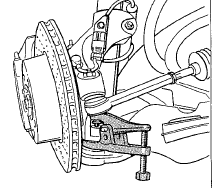
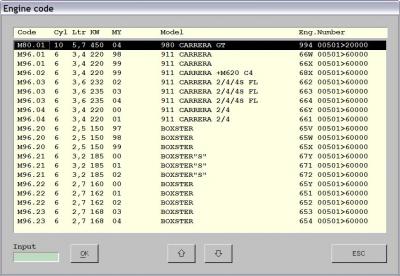
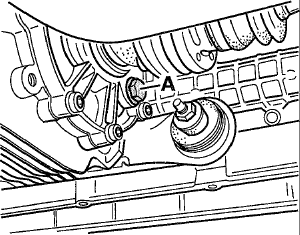
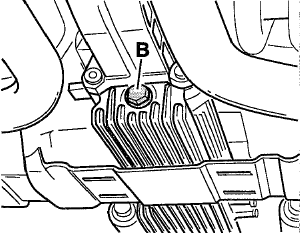
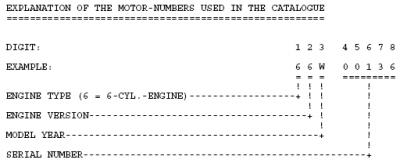

Boxster S Summer Misfire
in 986 Series (Boxster, Boxster S)
Posted
You will need to put a OBD II scan tool on it to see if it is generating fault codes (not all fault codes turn on the CEL). The better tools will actually graph the performance of key components (like the MAF, fuel trim, O2 sensors, etc.).